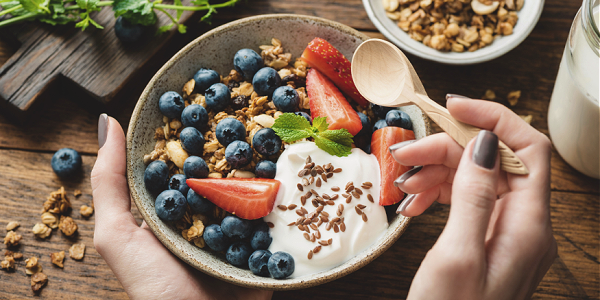
Milk has gotten a bad rap with the realm of certain health movements. Some mindsets suggest it can cause inflammation, other opinions hold that milk should only be consumed by young cows. Some individuals suffer from lactose intolerance, resulting in stomach discomfort with dairy foods. While certain situations may make dairy consumption challenging, in reality, milk is actually a superfood of sorts. Milk contains the majority of nutrients of concern in the United States for children and adults - especially calcium, potassium, and vitamin D.
Nutrients of concern are individual nutrients, for example potassium, which Americans do not appear to consume in adequate amounts for health. This intake is low enough to be a public health concern. The full list of nutrients of concern includes potassium, dietary fiber, calcium, and vitamin D. In certain populations, intake of iron, folate, and vitamin B12 is of concern as well. Milk is a superfood, which can provide a source of all of these nutrients, with the exception of dietary fiber.
So What's the Difference Between Whole Milk and Skim Milk?
When it comes to nutrients of concern - there's very little difference. No matter if you are choosing whole milk, reduced fat 2% milk, low-fat 1% milk, or fat free milk, the amount of protein, vitamin D and calcium are equivalent. The primary differences between whole milk and skim milk are taste, and fat content. And it goes without saying that the fat content is the primary factor that changes the taste, flavor, and mouthfeel of milk.

The difference between 1 cup of whole milk and 1 cup of skim milk is essentially a slice of butter. The amount of fat that is removed from a single glass of milk is about 8 grams, or roughly a ½ tablespoon, which provides around 65 Calories.
When it comes to weight loss, the difference between whole milk and skim milk is vast. And don't forget about full fat sour cream, cream cheese, full fat cheeses, and whole milk yogurts - they all contain anywhere from double to triple the amount of saturated fat as their low-fat or fat-free counterparts.
When it comes to children, however, whole milk with its extra fat might have an important place in appetite control.
According to a sample of 10,700 children in the United States, children between the ages of 2-4 years who consumed 1% or 2% milk had higher BMIs than children who consumed whole milk. And when researchers followed up on these same kids, they found that the children who drank 1% milk were more likely to become overweight or obese.
This is surprising, especially since whole milk contains a greater amount of calories. Researchers explained that the fat in whole milk could serve as an appetite suppressant, helping kids to feel fuller.
A study that looked at the variety of foods that children and adolescents consume in selected countries in Europe found that milk (both whole and skim) emerged as the food group that helped to identify adolescents with the lowest risk of cardiovascular disease. Not only that - the adolescents who had increased intakes of milk had higher cardiorespiratory fitness, and lower body fat.
When it comes to inflammation, a clinical trial performed in Canada found that whether an individual consumed zero dairy products, or a combination of low-fat and high fat dairy products, there were not any measurable adverse effects on inflammation, suggesting that the popular belief that milk is inflammatory is incorrect.
Overall, it may be a good idea for kids to consume 2% or whole milk from the ages of 2 until adolescence. After that, using low-fat dairy products is a great way to get in all the nutrients most adults need, while still skipping the extra calories from unhealthy saturated fat.







